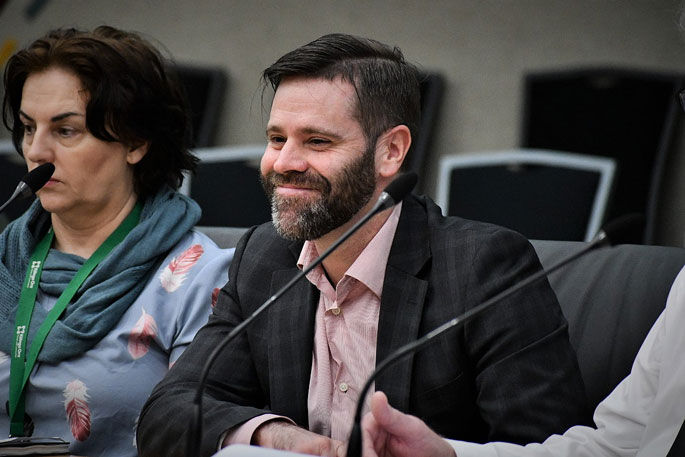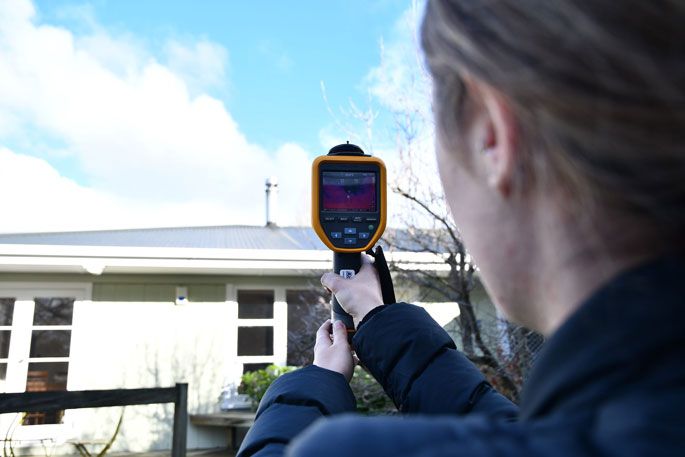The estimated number of Rotorua adults dying early from the impacts of poor air quality has halved in 13 years — contributing to a social cost saving of more than $100 million, district councillors have been told.
But officials have warned imminent changes to government goalposts for measuring air pollution levels will have a serious impact on Rotorua, which has been trying to improve its poor air quality, particularly in winter, for years.
Bay of Plenty Regional Council Rotorua constituency councillor Lyall Thurston spoke to Rotorua Lakes Council elected members on Wednesday at an infrastructure and environment committee meeting, describing the district’s “slow and steady” journey to improve air quality.
“Rotorua airshed, as we know, has the worst air quality in the North Island.”
An airshed is a geographic area for air quality management.
Wood burners in Rotorua were the main source of the pollution.
These have been targeted in a years-long crackdown that involved incentivising people to switch to cleaner heating options, phasing out some burners and using heat-seeking technology to smoke out rule-breakers.
Toi Te Ora Public Health medical officer of health Dr Gregory Evans told the meeting air pollution impacted people of all ages, but some were more vulnerable.
In the short-term, for example, it could exacerbate asthma. Longer term, accumulated exposure could cause cardiovascular disease and some of the pollutants were known carcinogens.
Particulate matter was of concern — the small particles that can be inhaled. The smaller the particle the easier to breathe in; PM2.5 is smaller than PM10.
Evans referred to a government-commissioned study released in 2022 that found the air pollution generated by humans in 2016 resulted in 3300 premature adult deaths in New Zealand.
He said estimates based on that study’s health effects model found there were 40 early adult deaths in the Rotorua airshed in 2009 as a result of domestic fire-produced air pollution.
The estimate for 2022 was 19.
The number of years of lives lost reduced from 596 to 246, while restricted activity days were down from 53,000 to 20,000.
The annual social cost of domestic fires had decreased from an estimated $190.9 million to $78.7m.
 Toi Te Ora Public Health medical officer of health Dr Gregory Evans. Photo / Laura Smith.
Toi Te Ora Public Health medical officer of health Dr Gregory Evans. Photo / Laura Smith.
Those statistics tracked with PM10 measurements in the airshed more than halving in that time, even as the population grew by 7000 people.
He said it was a “good news story” about how particulate matter had improved over the years.
Regional council senior regulatory project officer Marion Henton described how since 2008 it had moved from a soft voluntary approach to a firm regulatory approach when it came to high-polluting devices such as coal fires.
A “carrot and stick” method implemented in 2010 that aimed to help people meet regulations through loans and grants, while bylaws and plan changes reduced the number of non-compliant burners.
This winter was the first time fines were issued when conditions of abatement notices for using non-compliant burners were breached.
“We’re at the pointy end of the stick now.”
For the fourth year running, the airshed was on track for PM10 exceedances to be within limits set in the National Environmental Standards for Air Quality. Prior to this run, 2006 was the last time it did not breach the limits.
It moved from 37 exceedances in 2008 to zero this year, to the end of July.
But Henton said changes outside the regional council’s control were coming that would “move the goalposts”.
The national standards were being reviewed and the government proposed to move limits from PM10 to PM2.5. Wood smoke is about 90 per cent the latter.
“The shift to PM2.5 will impact places like Rotorua [which] have high levels of wood smoke.”
It would have a “significant impact on the Rotorua airshed”, as going by the last few years of monitoring, it would not be meeting the limits.
She said the council worked with homeowners who were struggling financially to replace their non-compliant burners.
It had been “incredibly generous” over the years, replacing the heating in hundreds of homes for free, she said.
She worked with vulnerable people, she said, and the goal was to find the best fit for them.
The regional council would adjust targets after the standard amendments were finalised, which was expected to be this year.
Public Interest Journalism funded through NZ On Air.




0 comments
Leave a Comment
You must be logged in to make a comment.